1 Martensite morphology
It is a non-diffusion type phase change and is the main way to improve the hardness and strength of steel.
1.1 lath martensite (low carbon martensite):
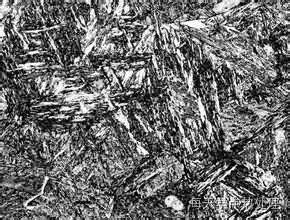
It is a typical structure formed in low- and medium-carbon steels, maraging steels, and iron-based alloys such as stainless steel. The substructure is a dislocation (also known as dislocation martensite), and its morphological characteristics are shown in Table 1.
1.2 Flaky martensite (acicular martensite or high carbon martensite):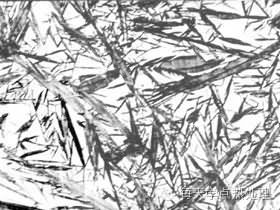
Common in quenching high, medium carbon steel, high nickel Fe-Ni alloy. The substructure is twin, and its morphological characteristics are shown in Table 1.
Table 1 Types and characteristics of iron-carbon alloy martensite
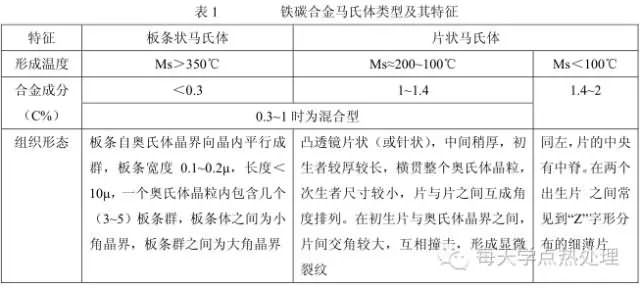
1.3 Other martensite forms:
1.3.1 Butterfly martensite: In the Fe-Ni alloy, when martensite is formed in a certain temperature range, the shape is slender rod shape, the cross section is butterfly shape, and the substructure is high density dislocation. Can't see the crystal.
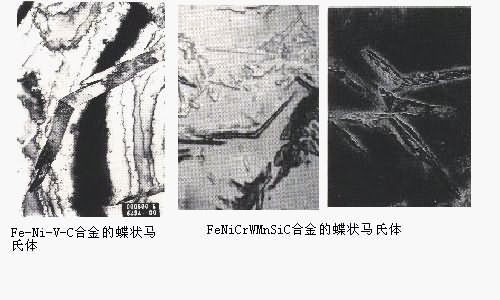
1.3.2 Flaky martensite: found in Fe-Ni-C alloys with extremely low Ms. It is a very thin band, with a specific form of crossing, showing a tortuous, bifurcated, etc., a twin-shaped martensite composed of twins.
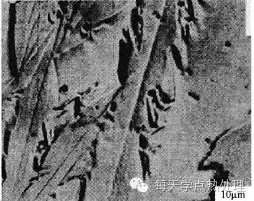
1.3.3 ε Martensite: In Fe-Mn alloy, when Mn exceeds 15%, ε martensite is formed after quenching, which is a close-packed hexagonal structure. The metallographic form is extremely thin.

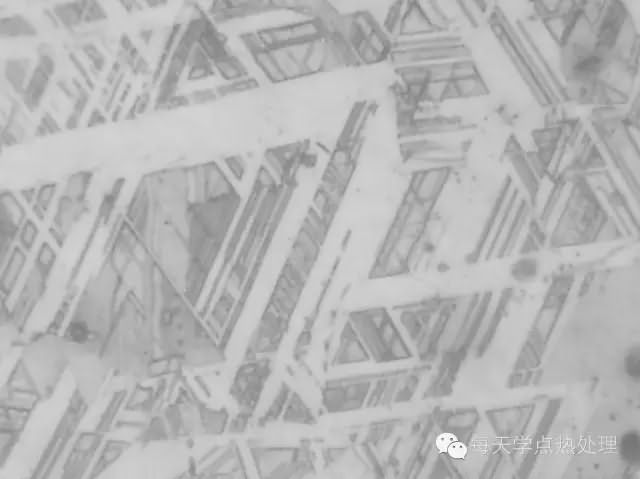
2 bainite morphology
Bainite is a two-phase mixture of supersaturated ferrite and cementite.
2.1 Upper bainite (on B): is a bundle of substantially parallel strips of ferrite and a non-lamellar structure composed of parallel cementite. The substructure is a dislocation. The formation temperature is in the upper part of the bainite transformation zone.

Medium and high carbon steel 350~550 °C, low carbon steel temperature is higher.
Under the optical microscope: the ferritic strips which grow into the crystal from the grain boundary to the inside of the bundle are seen as feathers as a whole, and the cementite particles between the strips are not distinguished. Mild steel (0.1% C): The ferrite strip is slightly wider and the cementite is thin.
Medium and high carbon steel: The shape is formed by a granular shape and a bead shape. High carbon steel (1.0% C or more): the structure is like a snowflake, and the matrix consists of short ferrite and short rod cementite. With the increase of carbon content, cementite can be distributed between ferrite and can also be distributed inside each ferrite slab.
Observation under electron microscope: two phases of ferrite and cementite were observed. The ferrite has a small angle grain boundary (6°~18°), and the cementite is arranged in a row along the long axis of the strip. Large angles of grain boundaries between large groups of ferrite laths.
2.2 Lower bainite (B under): It is a two-phase structure of flake ferrite and internal precipitated carbide. The substructure is a dislocation.
The medium and high carbon steel formation temperature is between about 350 ° C and Ms.

Under the optical microscope: the ferrite phase is needle-like or flaky, and the needle and the needle intersect at a certain angle to distinguish the carbide.
Observation under electron microscope: It can be seen that the carbides are distributed in the form of particles or flakes in the a phase, and are arranged along the longitudinal axis of the sheet at 55 to 65°.
B is very similar to the high carbon M back, both are dark black needles, and each needle has a certain angle of intersection.
Light under the light mirror: difficult to distinguish.
Under electron microscope, the carbides under B are only distributed in one direction of [121]a, and the carbides in M ​​are distributed in two directions. B is more susceptible to etch and black than M.
2.3 Granular bainite: It consists of massive (equal) ferrite and carbon-rich austenite. The carbon-rich austenite region is generally granular, and may also be small islands, small rivers, and the like.

From the morphology and distribution of the microstructure, the bainite is very similar to the tempered martensite of high carbon steel. Both are dark black needles, and each needle has a certain angle of intersection.
Morphologically distinct: Martensite needles are wide and large, and the two needles intersect at an angle of 60°, while the lower Bayesian tempering horses of bainite and high carbon steel are observed from the morphology and distribution of the microstructure. The austenite is very thin and short, the needle distribution is arbitrary, and the intersection of the two leaves is mostly 55°.
It is distinguished from the degree of erosion: martensite is harder to erode than lower bainite, and is usually distinguished by shallow (light) etching. The black short needle appearing after etching is lower bainite.
The martensite has a light background in the quenched state with dark slats on it. The background becomes deeper, but the slats formed first cannot be caught, and the martensite is tempered. Under normal etching: tempered martensite brownish yellow.
The habitual surface of high carbon martensite is (225) γ and (259) γ, and the habitual surface of lower bainite is (112) γ.
When upper bainite coexists with low carbon martensite:

The upper bainite is often distributed in the prior austenite grain boundaries. Generally, the upper bainite has a deeper contrast than the martensite, the upper bainite is more uniformly etched, and the low-carbon martensite is lined between the bundles. Degree difference.

When lower bainite and tempered martensite coexist:
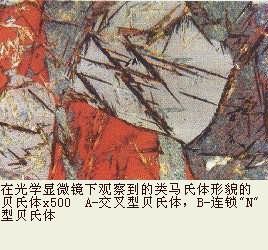
Under high magnification, the bainite needles were unevenly black, which appeared to be faintly visible in the two-phase structure, and the high-carbon martensite was uniform gray-black.
High-order lower bainite without middle ridge
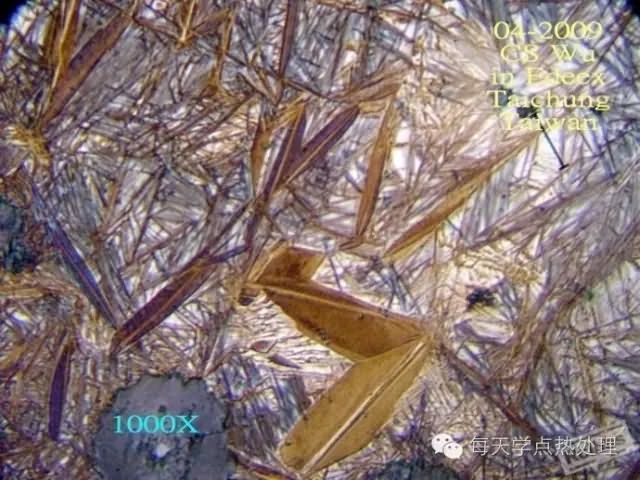
Pvc Sterilizer For Water,Pvc Ultraviolet Sterilizer For Disinfection,Uvc Pvc Sterlizer,Uvc Pvc Sterlizer For Aquarium
Guangdong Kingrate Optoelectronic Technology Co., Ltd. , https://www.kingrateuv.com